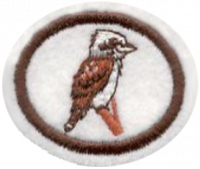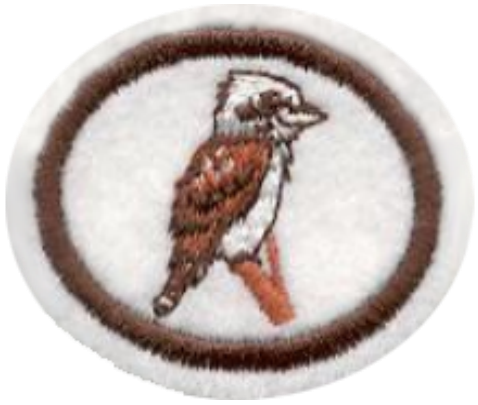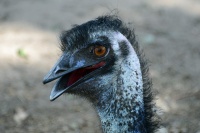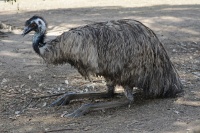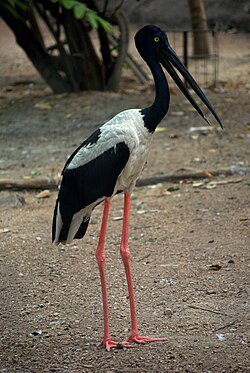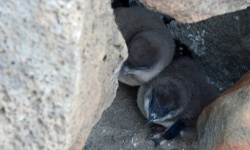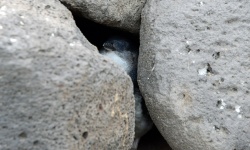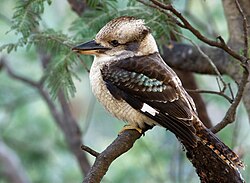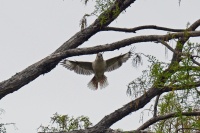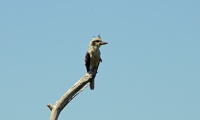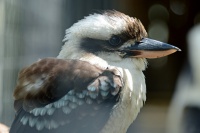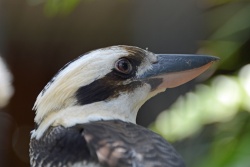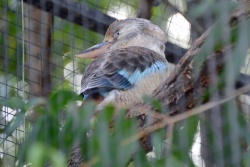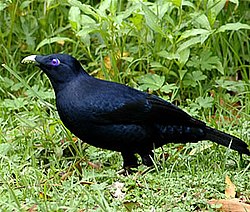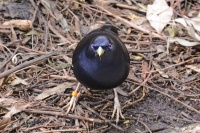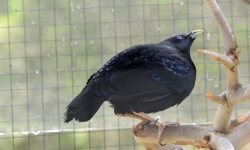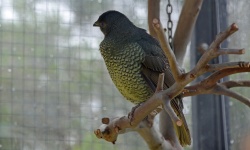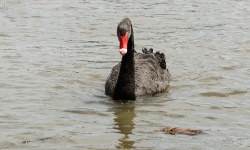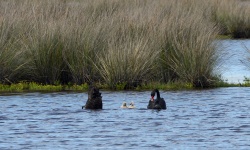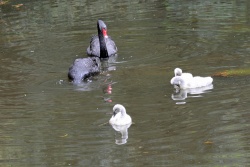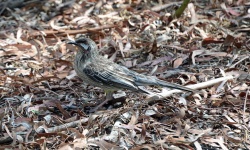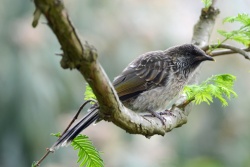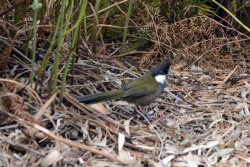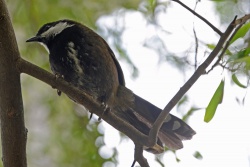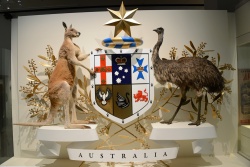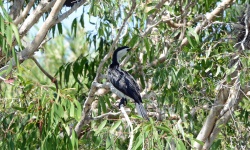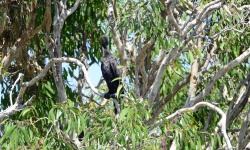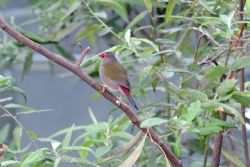|
|
| (30 intermediate revisions by the same user not shown) |
| Line 2: |
Line 2: |
| | <section begin="Body" /> | | <section begin="Body" /> |
| | {{ansreq|page={{#titleparts:{{PAGENAME}}|2|1}}|num=1}} | | {{ansreq|page={{#titleparts:{{PAGENAME}}|2|1}}|num=1}} |
| − | <noinclude><div lang="en" dir="ltr" class="mw-content-ltr"> | + | <noinclude></noinclude> |
| − | </noinclude> | + | <!-- 1. Explicar lo siguiente: --> |
| − | <!-- 1. Explain the following: --> | + | <noinclude></noinclude> |
| − | <noinclude> | |
| − | </div></noinclude>
| |
| | {{ansreq|page={{#titleparts:{{PAGENAME}}|2|1}}|num=1a}} <!--T:3--> | | {{ansreq|page={{#titleparts:{{PAGENAME}}|2|1}}|num=1a}} <!--T:3--> |
| − | <noinclude><div lang="en" dir="ltr" class="mw-content-ltr"> | + | <noinclude></noinclude> |
| − | </noinclude> | |
| − | '''[https://en.wikipedia.org/wiki/Emu The Emu]''' is the second largest bird in the world by height (after the ostrich)and is widely found in Australia. The largest emus can reach up to 1.5–1.9 m (4.9–6.2 ft) in height, 1–1.3 m (3.3–4.3 ft) at the shoulder. In length measured from the bill to the tail, emus range from 139 to 164 cm (55 to 65 in), with males averaging 148.5 cm (58.5 in) and females averaging 156.8 cm (61.7 in). Emus weigh between 18 and 60 kg (40 and 132 lb), with an average of 31.5 and 36.9 kg (69 and 81 lb) in males and females, respectively. Females are usually larger than males by a small amount, and are substantially wider across the rump.
| |
| − | </div>
| |
| | | | |
| − | <div lang="en" dir="ltr" class="mw-content-ltr">
| + | {{clear}} |
| − | However, according to this [https://en.wikipedia.org/wiki/List_of_largest_birds list of the largest birds], the Southern and Northern Cassowary are both on average heavier and larger than the Emu, but not always as tall. So the answer depends on how you define "largest".
| |
| − | </div>
| |
| | | | |
| − | <div lang="en" dir="ltr" class="mw-content-ltr">
| + | {{clear}} |
| − | Both the Emu and the Cassowary are known as Ratites, flightless birds without a keel on the breastbone for flight muscle attachment. Other Ratites include Ostriches, Rheas and Kiwis.
| |
| − | </div>
| |
| | | | |
| − | <div lang="en" dir="ltr" class="mw-content-ltr">
| |
| | [[Image:Dromaius novaehollandiae 9017.jpg|200px]] | | [[Image:Dromaius novaehollandiae 9017.jpg|200px]] |
| | [[Image:Dromaius novaehollandiae 9019.jpg|200px]] | | [[Image:Dromaius novaehollandiae 9019.jpg|200px]] |
| | [[Image:Casuarius casuarius 5276 W.jpg|200px]] | | [[Image:Casuarius casuarius 5276 W.jpg|200px]] |
| | [[Image:Casuarius casuarius 5279 W.jpg|200px]] | | [[Image:Casuarius casuarius 5279 W.jpg|200px]] |
| − | </div>
| |
| | | | |
| − | <div lang="en" dir="ltr" class="mw-content-ltr">
| + | <noinclude></noinclude> |
| − | <noinclude> | |
| − | </div></noinclude>
| |
| | {{CloseReq}} <!-- 1a --> | | {{CloseReq}} <!-- 1a --> |
| | {{ansreq|page={{#titleparts:{{PAGENAME}}|2|1}}|num=1b}} <!--T:5--> | | {{ansreq|page={{#titleparts:{{PAGENAME}}|2|1}}|num=1b}} <!--T:5--> |
| − | <noinclude><div lang="en" dir="ltr" class="mw-content-ltr"> | + | <noinclude></noinclude> |
| − | </noinclude> | |
| − | </div>
| |
| | | | |
| − | <div lang="en" dir="ltr" class="mw-content-ltr">
| + | {{clear}} |
| − | [[Image:Emu_Gelege.jpg|left|200px]]
| |
| − | </div>
| |
| | | | |
| − | <div lang="en" dir="ltr" class="mw-content-ltr">
| + | {{clear}} |
| − | Male Emu lose their appetite and construct a rough nest in a semi-sheltered hollow on the ground from bark, grass, sticks, and leaves.[3] The nest is almost always a flat surface rather than a segment of a sphere, although in cold conditions the nest is taller, up to 7 cm tall, and more spherical to provide more insulation. When other material is lacking, it can also use spinifex grass bushes more than a metre across, despite the prickly nature. The nest can be placed in open ground or near scrubs and rocks, although thick grass is usually present if the emu takes the former option. The nests are usually placed in an area where the emu has a clear view of the surrounds and can detect predators.
| |
| − | </div>
| |
| | | | |
| − | <div lang="en" dir="ltr" class="mw-content-ltr">
| + | {{clear}} |
| − | The pair mates every day or two, and every second or third day the female lays one of an average of 11 (and as many as 20) very large, thick-shelled, dark-green eggs. The shell is around 1 mm thick although indigenous Australians say that northern eggs are thinner. The number of eggs varies with rainfall. The eggs are on average 134 by 89 millimetres (5.3 in × 3.5 in) and weigh between 700 and 900 grams (1.5 and 2.0 lb),[49] which is roughly equivalent to 10–12 chicken eggs in volume and weight. The egg surface is granulated and pale green. During the incubation period, the egg turns dark green, although if the egg never hatches, it will turn white from the bleaching effect of the sun.
| |
| − | </div>
| |
| | | | |
| − | <div lang="en" dir="ltr" class="mw-content-ltr">
| + | {{clear}} |
| − | The male Eu becomes broody after his mate starts laying, and begins to incubate the eggs before the laying period is complete. From this time on, he does not eat, drink, or defecate, and stands only to turn the eggs, which he does about 10 times a day. Sometimes he will walk away at night; he chooses such a time as most predators of emu eggs are not nocturnal. Over eight weeks of incubation, he will lose a third of his weight and will survive only on stored body-fat and on any morning dew that he can reach from the nest.
| |
| − | </div>
| |
| | | | |
| − | <div lang="en" dir="ltr" class="mw-content-ltr">
| + | {{clear}} |
| − | [[Image:Casuarius_casuarius-Artis_Zoo_-Netherlands_-male_and_chicks-8c.jpg|left|200px]]
| |
| − | </div>
| |
| | | | |
| − | <div lang="en" dir="ltr" class="mw-content-ltr">
| + | {{clear}} |
| − | The male cassowary builds a nest on the ground; a mattress of herbaceous plant material 5 to 10 centimetres (2–4 in) thick and up to 100 centimetres (39 in) wide. This is thick enough to let moisture drain away from the eggs. The male also incubates the eggs and raises the chicks alone. A clutch of three or four eggs are laid measuring 138 by 95 millimetres (5.4 in × 3.7 in). They have a granulated surface and are initially bright pea-green in colour although they fade with age.
| |
| − | </div>
| |
| | | | |
| − | <div lang="en" dir="ltr" class="mw-content-ltr">
| + | <noinclude></noinclude> |
| − | <noinclude> | |
| − | </div></noinclude>
| |
| | {{CloseReq}} <!-- 1b --> | | {{CloseReq}} <!-- 1b --> |
| | {{ansreq|page={{#titleparts:{{PAGENAME}}|2|1}}|num=1c}} <!--T:12--> | | {{ansreq|page={{#titleparts:{{PAGENAME}}|2|1}}|num=1c}} <!--T:12--> |
| − | <noinclude><div lang="en" dir="ltr" class="mw-content-ltr"> | + | <noinclude></noinclude> |
| − | </noinclude> | |
| − | Emu can sprint at 50 km/h (31 mph).
| |
| − | Cassowary are also fast runners, attaining speeds up to 48 km (30 mi) per hr.
| |
| − | Both birds are flightless and run about the same maximum speed.
| |
| − | </div>
| |
| | | | |
| − | <div lang="en" dir="ltr" class="mw-content-ltr">
| + | <noinclude></noinclude> |
| − | <noinclude> | |
| − | </div></noinclude>
| |
| | {{CloseReq}} <!-- 1c --> | | {{CloseReq}} <!-- 1c --> |
| | {{ansreq|page={{#titleparts:{{PAGENAME}}|2|1}}|num=1d}} <!--T:13--> | | {{ansreq|page={{#titleparts:{{PAGENAME}}|2|1}}|num=1d}} <!--T:13--> |
| − | <noinclude><div lang="en" dir="ltr" class="mw-content-ltr"> | + | <noinclude></noinclude> |
| − | </noinclude> | |
| − | </div>
| |
| | | | |
| − | <div lang="en" dir="ltr" class="mw-content-ltr">
| + | {{clear}} |
| − | Sarus crane (Grus antigone) is a large non-migratory crane found in parts of the Indian Subcontinent, Southeast Asia and Australia. The tallest of the flying birds, standing at a height of up to 1.8 m (5.9 ft).
| |
| − | </div>
| |
| | | | |
| − | <div lang="en" dir="ltr" class="mw-content-ltr">
| + | <noinclude></noinclude> |
| − | <noinclude> | |
| − | </div></noinclude>
| |
| | {{CloseReq}} <!-- 1d --> | | {{CloseReq}} <!-- 1d --> |
| | {{ansreq|page={{#titleparts:{{PAGENAME}}|2|1}}|num=1e}} <!--T:15--> | | {{ansreq|page={{#titleparts:{{PAGENAME}}|2|1}}|num=1e}} <!--T:15--> |
| − | <noinclude><div lang="en" dir="ltr" class="mw-content-ltr"> | + | <noinclude></noinclude> |
| − | </noinclude> | |
| − | </div>
| |
| | | | |
| − | <div lang="en" dir="ltr" class="mw-content-ltr">
| + | {{clear}} |
| − | The Black-necked Stork is the only stork found in Australia. With black and white body plumage, glossy dark green and purple neck and massive black bill, it is easily identified from all other Australian birds. The legs are long and coral-red in colour. The female is distinguished by its yellow eyes while males have brown irises.
| |
| − | </div>
| |
| | | | |
| − | <div lang="en" dir="ltr" class="mw-content-ltr">
| |
| | [[Image:Ephippiorhynchus_asiaticus_-India-8.jpg|200px]] | | [[Image:Ephippiorhynchus_asiaticus_-India-8.jpg|200px]] |
| − | </div>
| |
| | | | |
| − | <div lang="en" dir="ltr" class="mw-content-ltr">
| + | <noinclude></noinclude> |
| − | <noinclude> | |
| − | </div></noinclude>
| |
| | {{CloseReq}} <!-- 1e --> | | {{CloseReq}} <!-- 1e --> |
| | {{CloseReq}} <!-- 1 --> | | {{CloseReq}} <!-- 1 --> |
| | {{ansreq|page={{#titleparts:{{PAGENAME}}|2|1}}|num=2}} | | {{ansreq|page={{#titleparts:{{PAGENAME}}|2|1}}|num=2}} |
| − | <noinclude><div lang="en" dir="ltr" class="mw-content-ltr"> | + | <noinclude></noinclude> |
| − | </noinclude> | + | <!-- 2. ¿Existen pingüinos nativos a Australia, y si sí, dónde se puede ir para observarlos? --> |
| − | <!-- 2. Are penguins found naturally in Australia and if so, where would you go to observe penguins? --> | |
| − | </div>
| |
| | | | |
| − | <div lang="en" dir="ltr" class="mw-content-ltr">
| + | Los pingüinos viven a lo largo de la costa sur de Australia y otras partes del mundo (véase el mapa). Mire las playas del océano. |
| − | At 30cm and just 1kg, the Little Penguin (Eudyptula minor), also called the Fairy Penguin, is the smallest species of Penguin in the world. It is also the only penguin native to Australia. Found primarily along the southern coast of Australia, there is a well-known small colony nesting in the St. Kilda Pier, near Melbourne, and a larger group on Phillip Island that “parade” at dusk when returning from a day fishing at sea. Below are images of juvenile Little Penguins, hiding in the St. Kilda Pier. Also, a map highlighting the range of all Penguin species (Penguins are only found in the south, not the north)
| + | [[Image:Penguin_range.png|right|200px]] |
| − | </div>
| |
| | | | |
| − | <div lang="en" dir="ltr" class="mw-content-ltr">
| |
| | [[Image:LittlePenguin 4444.jpg|250px]] | | [[Image:LittlePenguin 4444.jpg|250px]] |
| | [[Image:LittlePenguin 4437.jpg|250px]] | | [[Image:LittlePenguin 4437.jpg|250px]] |
| | [[Image:Penguin_range.png|250px]] | | [[Image:Penguin_range.png|250px]] |
| − | </div>
| |
| | | | |
| − | <div lang="en" dir="ltr" class="mw-content-ltr">
| + | <noinclude></noinclude> |
| − | <noinclude> | |
| − | </div></noinclude>
| |
| | {{CloseReq}} <!-- 2 --> | | {{CloseReq}} <!-- 2 --> |
| | {{ansreq|page={{#titleparts:{{PAGENAME}}|2|1}}|num=3}} | | {{ansreq|page={{#titleparts:{{PAGENAME}}|2|1}}|num=3}} |
| − | <noinclude><div lang="en" dir="ltr" class="mw-content-ltr"> | + | <noinclude></noinclude> |
| − | </noinclude> | + | <!-- 3. Explicar lo siguiente: --> |
| − | <!-- 3. Explain the following: --> | + | <noinclude></noinclude> |
| − | <noinclude> | |
| − | </div></noinclude>
| |
| | {{ansreq|page={{#titleparts:{{PAGENAME}}|2|1}}|num=3a}} <!--T:20--> | | {{ansreq|page={{#titleparts:{{PAGENAME}}|2|1}}|num=3a}} <!--T:20--> |
| − | <noinclude><div lang="en" dir="ltr" class="mw-content-ltr"> | + | <noinclude></noinclude> |
| − | </noinclude> | |
| − | The Laughing Kookaburra (''Dacelo novaeguineae'') is an Australian carnivorous kingfisher with a distinctive call (You can hear the call on this page [[http://www.birdsinbackyards.net/species/Dacelo-novaeguineae]]. They live in eastern Australia, nesting in tree hollows or termite nests. A similar species is the Blue-Winged Kookaburra, though its call is not nearly as "laughing" as that of its cousin. Note that the Laughing Kookaburra is pictured on the patch for the Australian Birds honor.
| |
| − | </div>
| |
| | | | |
| − | <div lang="en" dir="ltr" class="mw-content-ltr">
| |
| | [[Image:Dacelo_novaeguineae_waterworks.jpg|200px]] | | [[Image:Dacelo_novaeguineae_waterworks.jpg|200px]] |
| | [[Image:Dacelo novaeguineae 8337.jpg|200px]] | | [[Image:Dacelo novaeguineae 8337.jpg|200px]] |
| | [[Image:LaughingKookaburra 4816.jpg|200px]] | | [[Image:LaughingKookaburra 4816.jpg|200px]] |
| | [[Image:Dacelo novaeguineae 9129.jpg|200px]] | | [[Image:Dacelo novaeguineae 9129.jpg|200px]] |
| − | </div>
| |
| | | | |
| − | <div lang="en" dir="ltr" class="mw-content-ltr">
| + | <noinclude></noinclude> |
| − | <noinclude> | |
| − | </div></noinclude>
| |
| | {{CloseReq}} <!-- 3a --> | | {{CloseReq}} <!-- 3a --> |
| | {{ansreq|page={{#titleparts:{{PAGENAME}}|2|1}}|num=3b}} <!--T:21--> | | {{ansreq|page={{#titleparts:{{PAGENAME}}|2|1}}|num=3b}} <!--T:21--> |
| − | <noinclude><div lang="en" dir="ltr" class="mw-content-ltr"> | + | <noinclude></noinclude> |
| − | </noinclude> | |
| − | </div>
| |
| | | | |
| − | <div lang="en" dir="ltr" class="mw-content-ltr">
| + | {{clear}} |
| − | Order Coraciiformes (Kingfishers and Rollers)
| |
| − | </div>
| |
| | | | |
| − | <div lang="en" dir="ltr" class="mw-content-ltr">
| + | {{clear}} |
| − | Family Alcedinidae (Kingfishers)
| |
| − | </div>
| |
| | | | |
| − | <div lang="en" dir="ltr" class="mw-content-ltr">
| + | {{clear}} |
| − | Genus Dacelo (Kookaburras)
| |
| − | </div>
| |
| | | | |
| | | | |
| − | <div lang="en" dir="ltr" class="mw-content-ltr">
| + | {{clear}} |
| − | Dacelo novaeguineae - Laughing Kookaburra
| |
| − | Dacelo leachii - Blue-Winged Kookaburra
| |
| − | </div>
| |
| | | | |
| − | <div lang="en" dir="ltr" class="mw-content-ltr">
| |
| | [[Image:Dacelo novaeguineae 9122.jpg|250px]] | | [[Image:Dacelo novaeguineae 9122.jpg|250px]] |
| | [[Image:Dacelo leachii 9098.jpg|250px]] | | [[Image:Dacelo leachii 9098.jpg|250px]] |
| − | </div>
| |
| | | | |
| − | <div lang="en" dir="ltr" class="mw-content-ltr">
| + | <noinclude></noinclude> |
| − | <noinclude> | |
| − | </div></noinclude>
| |
| | {{CloseReq}} <!-- 3b --> | | {{CloseReq}} <!-- 3b --> |
| | {{ansreq|page={{#titleparts:{{PAGENAME}}|2|1}}|num=3c}} <!--T:23--> | | {{ansreq|page={{#titleparts:{{PAGENAME}}|2|1}}|num=3c}} <!--T:23--> |
| − | <noinclude><div lang="en" dir="ltr" class="mw-content-ltr"> | + | <noinclude></noinclude> |
| − | </noinclude> | |
| − | </div>
| |
| | | | |
| − | <div lang="en" dir="ltr" class="mw-content-ltr">
| + | {{clear}} |
| − | Most species of kookaburra live in family units, mate for life, and both parents assist with incubation and feeding. In addition, the offspring help the parents hunt and care for the next generation of offspring. Now that is unusual in any species!
| |
| − | </div>
| |
| | | | |
| − | <div lang="en" dir="ltr" class="mw-content-ltr">
| + | {{clear}} |
| − | A juvenile Laughing Kookaburra, still in its pin-feathers.
| |
| − | [[Image:Dacelo novaeguineae 9141.jpg|250px]]
| |
| − | </div>
| |
| | | | |
| − | <div lang="en" dir="ltr" class="mw-content-ltr">
| + | <noinclude></noinclude> |
| − | <noinclude> | |
| − | </div></noinclude>
| |
| | {{CloseReq}} <!-- 3c --> | | {{CloseReq}} <!-- 3c --> |
| | {{CloseReq}} <!-- 3 --> | | {{CloseReq}} <!-- 3 --> |
| | {{ansreq|page={{#titleparts:{{PAGENAME}}|2|1}}|num=4}} | | {{ansreq|page={{#titleparts:{{PAGENAME}}|2|1}}|num=4}} |
| − | <noinclude><div lang="en" dir="ltr" class="mw-content-ltr"> | + | <noinclude></noinclude> |
| − | </noinclude> | + | <!-- 4. Explicar lo siguiente: --> |
| − | <!-- 4. Explain the following: --> | + | <noinclude></noinclude> |
| − | <noinclude> | |
| − | </div></noinclude>
| |
| | {{ansreq|page={{#titleparts:{{PAGENAME}}|2|1}}|num=4a}} <!--T:25--> | | {{ansreq|page={{#titleparts:{{PAGENAME}}|2|1}}|num=4a}} <!--T:25--> |
| − | <noinclude><div lang="en" dir="ltr" class="mw-content-ltr"> | + | <noinclude></noinclude> |
| − | </noinclude> | |
| − | Australia's Megapodes are mound-builders, making large nests from leaf litter to incubate their eggs. These include the Australian Brush-Turkey (Alectura lathami), the Malleefowl (Leipoa ocellata), and the Orange-Footed Scrub Fowl (Megapodius reinwardt).
| |
| − | </div>
| |
| | | | |
| − | <div lang="en" dir="ltr" class="mw-content-ltr">
| + | {{clear}} |
| − | The Australian Brush-Turkey
| |
| − | [[Image:Alectura lathami 8734.jpg|250px]]
| |
| − | </div>
| |
| | | | |
| − | <div lang="en" dir="ltr" class="mw-content-ltr">
| + | <noinclude></noinclude> |
| − | <noinclude> | |
| − | </div></noinclude>
| |
| | {{CloseReq}} <!-- 4a --> | | {{CloseReq}} <!-- 4a --> |
| | {{ansreq|page={{#titleparts:{{PAGENAME}}|2|1}}|num=4b}} <!--T:26--> | | {{ansreq|page={{#titleparts:{{PAGENAME}}|2|1}}|num=4b}} <!--T:26--> |
| − | <noinclude><div lang="en" dir="ltr" class="mw-content-ltr"> | + | <noinclude></noinclude> |
| − | </noinclude> | |
| − | </div>
| |
| | | | |
| − | <div lang="en" dir="ltr" class="mw-content-ltr">
| + | {{clear}} |
| − | Australian Brush-Turkeys, and other megapodes, build their nests by scraping together large mounds of leaf litter. The eggs are laid in the mound and covered. Warmth is provided by the decaying vegetation, with the Brush-Turkey adjusting the temperature (which it measures by sticking its beak into the mound) by adding or removing brush as needed.
| |
| − | </div>
| |
| | | | |
| − | <div lang="en" dir="ltr" class="mw-content-ltr">
| + | {{clear}} |
| − | An Australian Brush-Turkey working on its mound.
| |
| − | [[Image:Alectura lathami 8691.jpg|250px]]
| |
| − | </div>
| |
| | | | |
| − | <div lang="en" dir="ltr" class="mw-content-ltr">
| + | <noinclude></noinclude> |
| − | <noinclude> | |
| − | </div></noinclude>
| |
| | {{CloseReq}} <!-- 4b --> | | {{CloseReq}} <!-- 4b --> |
| | {{ansreq|page={{#titleparts:{{PAGENAME}}|2|1}}|num=4c}} <!--T:29--> | | {{ansreq|page={{#titleparts:{{PAGENAME}}|2|1}}|num=4c}} <!--T:29--> |
| − | <noinclude><div lang="en" dir="ltr" class="mw-content-ltr"> | + | <noinclude></noinclude> |
| − | </noinclude> | |
| − | </div>
| |
| | | | |
| − | <div lang="en" dir="ltr" class="mw-content-ltr">
| + | {{clear}} |
| − | The Megapodes are often also called Mound Builders or Incubator Birds.
| |
| − | </div>
| |
| | | | |
| − | <div lang="en" dir="ltr" class="mw-content-ltr">
| + | <noinclude></noinclude> |
| − | <noinclude> | |
| − | </div></noinclude>
| |
| | {{CloseReq}} <!-- 4c --> | | {{CloseReq}} <!-- 4c --> |
| | {{CloseReq}} <!-- 4 --> | | {{CloseReq}} <!-- 4 --> |
| | {{ansreq|page={{#titleparts:{{PAGENAME}}|2|1}}|num=5}} | | {{ansreq|page={{#titleparts:{{PAGENAME}}|2|1}}|num=5}} |
| − | <noinclude><div lang="en" dir="ltr" class="mw-content-ltr"> | + | <noinclude></noinclude> |
| − | </noinclude> | + | <!-- 5. Explicar lo siguiente: --> |
| − | <!-- 5. Explain the following: --> | + | <noinclude></noinclude> |
| − | <noinclude> | |
| − | </div></noinclude>
| |
| | {{ansreq|page={{#titleparts:{{PAGENAME}}|2|1}}|num=5a}} <!--T:31--> | | {{ansreq|page={{#titleparts:{{PAGENAME}}|2|1}}|num=5a}} <!--T:31--> |
| − | <noinclude><div lang="en" dir="ltr" class="mw-content-ltr"> | + | <noinclude></noinclude> |
| − | </noinclude> | |
| − | </div>
| |
| | | | |
| − | <div lang="en" dir="ltr" class="mw-content-ltr">
| + | {{clear}} |
| − | A bower is large structure made of grass and bright objects, used by the bower bird during courtship displays to attract a mate. They prefer blue items.
| |
| − | </div>
| |
| | | | |
| − | <div lang="en" dir="ltr" class="mw-content-ltr">
| |
| | [[Image:Satinbowerbirdmale.jpg|200px]] | | [[Image:Satinbowerbirdmale.jpg|200px]] |
| | [[Image:Ptilonorhynchus violaceus 8026.jpg|200px]] | | [[Image:Ptilonorhynchus violaceus 8026.jpg|200px]] |
| | [[Image:Ptilonorhynchus violaceus 8045.jpg|200px]] | | [[Image:Ptilonorhynchus violaceus 8045.jpg|200px]] |
| | [[Image:Ptilonorhynchus violaceus Bower 8018.jpg|200px]] | | [[Image:Ptilonorhynchus violaceus Bower 8018.jpg|200px]] |
| − | </div>
| |
| | | | |
| − | <div lang="en" dir="ltr" class="mw-content-ltr">
| + | <noinclude></noinclude> |
| − | <noinclude> | |
| − | </div></noinclude>
| |
| | {{CloseReq}} <!-- 5a --> | | {{CloseReq}} <!-- 5a --> |
| | {{ansreq|page={{#titleparts:{{PAGENAME}}|2|1}}|num=5b}} <!--T:32--> | | {{ansreq|page={{#titleparts:{{PAGENAME}}|2|1}}|num=5b}} <!--T:32--> |
| − | <noinclude><div lang="en" dir="ltr" class="mw-content-ltr"> | + | <noinclude></noinclude> |
| − | </noinclude> | |
| − | </div>
| |
| | | | |
| − | <div lang="en" dir="ltr" class="mw-content-ltr">
| + | {{clear}} |
| − | Check the ranges of the [https://en.wikipedia.org/wiki/Bowerbird#Taxonomy_and_systematics various bower bird species] to find one that lives in your state. If no Bower Birds live in your state (you live outside the range of the bird), consider picking an [https://en.wikipedia.org/wiki/States_and_territories_of_Australia Australian state] and figuring out one that lives there.
| |
| − | </div>
| |
| | | | |
| − | <div lang="en" dir="ltr" class="mw-content-ltr">
| + | {{clear}} |
| − | The Satin Bowerbird, perhaps the best known, is found in at least three Australian states, from Queensland to Victoria. Below are the male and female Satin Bowerbirds.
| |
| − | </div>
| |
| | | | |
| − | <div lang="en" dir="ltr" class="mw-content-ltr">
| |
| | [[Image:SatinBowerbird 4183.jpg|250px]] | | [[Image:SatinBowerbird 4183.jpg|250px]] |
| | [[Image:SatinBowerbird 4181.jpg|250px]] | | [[Image:SatinBowerbird 4181.jpg|250px]] |
| − | </div>
| |
| | | | |
| | | | |
| − | <div lang="en" dir="ltr" class="mw-content-ltr">
| + | {{clear}} |
| − | A partial list of Australian Bowerbirds by state:
| |
| − | </div>
| |
| | | | |
| − | <div lang="en" dir="ltr" class="mw-content-ltr">
| + | {{clear}} |
| − | *Queensland:
| |
| − | **Spotted Catbird (''Ailuroedus melanotis'')
| |
| − | **Green Catbird (''Ailuroedus crassirostris'')
| |
| − | **Tooth-Billed Bowerbird (''Scenopoeetes dentirostris'')
| |
| − | **Golden Bowerbird (''Prionodura newtoniana'')
| |
| − | **Regent Bowerbird (''Sericulus chrysocephalus'')
| |
| − | **Satin Bowerbird (''Ptilonorhynchus violaceus'')
| |
| − | **Spotted Bowerbird (''Chlamydera maculata'')
| |
| − | **Great Bowerbird (''Chlamydera nuchalis'')
| |
| − | **Fawn-Breasted Bowerbird (''Chlamydera cerviniventris'')
| |
| − | </div>
| |
| | | | |
| − | <div lang="en" dir="ltr" class="mw-content-ltr">
| + | {{clear}} |
| − | *New South Wales:
| |
| − | **Green Catbird (''Ailuroedus crassirostris'')
| |
| − | **Regent Bowerbird (''Sericulus chrysocephalus'')
| |
| − | **Satin Bowerbird (''Ptilonorhynchus violaceus'')
| |
| − | **Spotted Bowerbird (''Chlamydera maculata'')
| |
| − | </div>
| |
| | | | |
| − | <div lang="en" dir="ltr" class="mw-content-ltr">
| + | {{clear}} |
| − | *Victoria:
| |
| − | **Satin Bowerbird (''Ptilonorhynchus violaceus'')
| |
| − | </div>
| |
| | | | |
| − | <div lang="en" dir="ltr" class="mw-content-ltr">
| + | {{clear}} |
| − | *South Australia:
| |
| − | **Western Bowerbird (''Chlamydera guttata'')
| |
| − | </div>
| |
| | | | |
| − | <div lang="en" dir="ltr" class="mw-content-ltr">
| + | {{clear}} |
| − | *Western Australia:
| |
| − | **Western Bowerbird (''Chlamydera guttata'')
| |
| − | **Great Bowerbird (''Chlamydera nuchalis'')
| |
| − | </div>
| |
| | | | |
| − | <div lang="en" dir="ltr" class="mw-content-ltr">
| + | {{clear}} |
| − | *Northern Territory:
| |
| − | **Western Bowerbird (''Chlamydera guttata'')
| |
| − | **Great Bowerbird (''Chlamydera nuchalis'')
| |
| − | </div>
| |
| | | | |
| − | <div lang="en" dir="ltr" class="mw-content-ltr">
| + | <noinclude></noinclude> |
| − | <noinclude> | |
| − | </div></noinclude>
| |
| | {{CloseReq}} <!-- 5b --> | | {{CloseReq}} <!-- 5b --> |
| | {{CloseReq}} <!-- 5 --> | | {{CloseReq}} <!-- 5 --> |
| | {{ansreq|page={{#titleparts:{{PAGENAME}}|2|1}}|num=6}} | | {{ansreq|page={{#titleparts:{{PAGENAME}}|2|1}}|num=6}} |
| − | <noinclude><div lang="en" dir="ltr" class="mw-content-ltr"> | + | <noinclude></noinclude> |
| − | </noinclude> | + | <!-- 6. ¿De dónde proviene el nombre del ave lira? ¿Qué es lo especial de su canto? --> |
| − | <!-- 6. Where does the Lyre Bird get his name and what is special about his song? --> | |
| − | </div>
| |
| | | | |
| − | <div lang="en" dir="ltr" class="mw-content-ltr">
| + | {{clear}} |
| − | The lyrebird's name came from an ignorant mistake, perpetrated in a famous painting. The male bird has a spectacular tail, consisting of 16 highly modified feathers (two long slender lyrates at the centre of the plume, two broader medians on the outside edges and twelve filamentaries arrayed between them).
| |
| − | </div>
| |
| | | | |
| − | <div lang="en" dir="ltr" class="mw-content-ltr">
| + | {{clear}} |
| − | [[Image:Lyre_bird.jpg|200px|John Gould's early 1800s painting of a superb lyrebird specimen at the British Museum]] This happened when a superb lyrebird specimen (which had been taken from Australia to England during the early 19th century) was prepared for display at the British Museum by a taxidermist who had never seen a live lyrebird. The taxidermist mistakenly thought that the tail would resemble a lyre, and that the tail would be held in a similar way to that of a peacock during courtship display, and so he arranged the feathers in this way. Later, John Gould (who had also never seen a live lyrebird), painted the lyrebird from the British Museum specimen.
| |
| − | </div>
| |
| | | | |
| − | <div lang="en" dir="ltr" class="mw-content-ltr">
| + | {{clear}} |
| − | Although very beautiful, the male lyrebird's tail is not held as in John Gould's painting. Instead, the male lyrebird's tail is fanned over the lyrebird during courtship display, with the tail completely covering his head and back—as can be seen in the image below and also the image of the 10 cent coin, where the superb lyrebird's tail (in courtship display) is portrayed accurately.
| |
| − | </div>
| |
| | | | |
| − | <div lang="en" dir="ltr" class="mw-content-ltr">
| + | {{clear}} |
| − | [[Image:Superb_Lyrebird_mound_dance.jpg|left|200px]] [[Image:Australian_10c_Coin.png|left|200px]]
| |
| − | </div>
| |
| | | | |
| − | <div lang="en" dir="ltr" class="mw-content-ltr">
| + | {{clear}} |
| − | A lyrebird's song is one of the more distinctive aspects of its behavioural biology. Lyrebirds sing throughout the year, but the peak of the breeding season, from June to August, is when they sing with the most intensity. During this peak they may sing for four hours of the day, almost half the hours of daylight. The song of the superb lyrebird is a mixture of seven elements of its own song and any number of other mimicked songs and noises. The lyrebird's syrinx is the most complexly-muscled of the Passerines (songbirds), giving the lyrebird extraordinary ability, unmatched in vocal repertoire and mimicry. Lyrebirds render with great fidelity the individual songs of other birds and the chatter of flocks of birds, and also mimic other animals such as koalas and dingos. The lyrebird is capable of imitating almost any sound and they have been recorded mimicking human caused sounds such as a mill whistle to a cross-cut saw, chainsaws, car engines and car alarms, fire alarms, rifle-shots, camera shutters, dogs barking, crying babies, music, and even the human voice. However, while the mimicry of human noises is widely reported, the extent to which it happens is exaggerated and the phenomenon is quite unusual.
| |
| − | </div>
| |
| | | | |
| − | <div lang="en" dir="ltr" class="mw-content-ltr">
| + | {{clear}} |
| − | The superb lyrebird's mimicked calls are learned from the local environment, including from other superb lyrebirds. An instructive example of this is the population of superb lyrebirds in Tasmania, which have retained the calls of species not native to Tasmania in their repertoire, but have also added some local Tasmanian endemic bird noises. It takes young birds about a year to perfect their mimicked repertoire. The female lyrebirds of both species are also mimics, and will sing on occasion but the females do so with less skill than the males. A recording of a superb lyrebird mimicking sounds of an electronic shooting game, workmen and chainsaws was added to the National Film and Sound Archive's Sounds of Australia registry in 2013.
| |
| − | </div>
| |
| | | | |
| − | <div lang="en" dir="ltr" class="mw-content-ltr">
| + | {{clear}} |
| − | One researcher, Sydney Curtis, has recorded flute-like lyrebird calls in the vicinity of the New England National Park. Similarly, in 1969, a park ranger, Neville Fenton, recorded a lyrebird song which resembled flute sounds in the New England National Park. After much detective work by Fenton, it was discovered that in the 1930s, a flute player living on a farm adjoining the park used to play tunes near his pet lyrebird. The lyrebird adopted the tunes into his repertoire, and retained them after release into the park. Neville Fenton forwarded a tape of his recording to Norman Robinson. Because a lyrebird is able to carry two tunes at the same time, Robinson filtered out one of the tunes and put it on the phonograph for the purposes of analysis. The song represents a modified version of two popular tunes in the 1930s: "The Keel Row" and "Mosquito's Dance". Musicologist David Rothenberg has endorsed this information.
| |
| − | </div>
| |
| | | | |
| − | <div lang="en" dir="ltr" class="mw-content-ltr">
| + | <noinclude></noinclude> |
| − | <noinclude> | |
| − | </div></noinclude>
| |
| | {{CloseReq}} <!-- 6 --> | | {{CloseReq}} <!-- 6 --> |
| | {{ansreq|page={{#titleparts:{{PAGENAME}}|2|1}}|num=7}} | | {{ansreq|page={{#titleparts:{{PAGENAME}}|2|1}}|num=7}} |
| − | <noinclude><div lang="en" dir="ltr" class="mw-content-ltr"> | + | <noinclude></noinclude> |
| − | </noinclude> | + | <!-- 7. Explicar lo siguiente: --> |
| − | <!-- 7. Explain the following: --> | + | <noinclude></noinclude> |
| − | <noinclude> | |
| − | </div></noinclude>
| |
| | {{ansreq|page={{#titleparts:{{PAGENAME}}|2|1}}|num=7a}} <!--T:42--> | | {{ansreq|page={{#titleparts:{{PAGENAME}}|2|1}}|num=7a}} <!--T:42--> |
| − | <noinclude><div lang="en" dir="ltr" class="mw-content-ltr"> | + | <noinclude></noinclude> |
| − | </noinclude> | |
| − | </div>
| |
| | | | |
| − | <div lang="en" dir="ltr" class="mw-content-ltr">
| + | {{clear}} |
| − | Wedge-tailed Eagles use the updrafts of thermals or hillslopes to rise effortlessly rarely needing to flap their huge wings. They soar very high in great circles. Wingspan typically is between 182 and 232 cm (6 ft 0 in and 7 ft 7 in) with the verified record being 284 cm (9 ft 4 in). This is similar to the bald eagle.
| |
| − | </div>
| |
| | | | |
| − | <div lang="en" dir="ltr" class="mw-content-ltr">
| + | <noinclude></noinclude> |
| − | <noinclude> | |
| − | </div></noinclude>
| |
| | {{CloseReq}} <!-- 7a --> | | {{CloseReq}} <!-- 7a --> |
| | {{ansreq|page={{#titleparts:{{PAGENAME}}|2|1}}|num=7b}} <!--T:44--> | | {{ansreq|page={{#titleparts:{{PAGENAME}}|2|1}}|num=7b}} <!--T:44--> |
| − | <noinclude><div lang="en" dir="ltr" class="mw-content-ltr"> | + | <noinclude></noinclude> |
| − | </noinclude> | |
| − | </div>
| |
| | | | |
| − | <div lang="en" dir="ltr" class="mw-content-ltr">
| + | {{clear}} |
| − | The Wedge-tailed Eagle have sophisticated binocular vision which enables them to accurately assess distances and pinpoint their prey. Their eyes also are equipped with bony rings which can squeeze and elongate the eyeball. This has the same effect as a telephoto lens on a camera. It enlarges the image seen by the bird. This is very unusual.
| |
| − | </div>
| |
| | | | |
| − | <div lang="en" dir="ltr" class="mw-content-ltr">
| + | <noinclude></noinclude> |
| − | <noinclude> | |
| − | </div></noinclude>
| |
| | {{CloseReq}} <!-- 7b --> | | {{CloseReq}} <!-- 7b --> |
| | {{ansreq|page={{#titleparts:{{PAGENAME}}|2|1}}|num=7c}} <!--T:46--> | | {{ansreq|page={{#titleparts:{{PAGENAME}}|2|1}}|num=7c}} <!--T:46--> |
| − | <noinclude><div lang="en" dir="ltr" class="mw-content-ltr"> | + | <noinclude></noinclude> |
| − | </noinclude> | |
| − | </div>
| |
| | | | |
| − | <div lang="en" dir="ltr" class="mw-content-ltr">
| + | <noinclude></noinclude> |
| − | According to [https://en.wikipedia.org/wiki/List_of_birds_by_flight_speed this list], the fastest bird of prey is the Peregrine Falcon with a maxium dive speed of 389 km/h or 242 mph! Now that is fast!
| |
| − |
| |
| − | <noinclude> | |
| − | </div></noinclude>
| |
| | {{CloseReq}} <!-- 7c --> | | {{CloseReq}} <!-- 7c --> |
| | {{ansreq|page={{#titleparts:{{PAGENAME}}|2|1}}|num=7d}} <!--T:47--> | | {{ansreq|page={{#titleparts:{{PAGENAME}}|2|1}}|num=7d}} <!--T:47--> |
| − | <noinclude><div lang="en" dir="ltr" class="mw-content-ltr"> | + | <noinclude></noinclude> |
| − | </noinclude> | |
| − | </div>
| |
| | | | |
| − | <div lang="en" dir="ltr" class="mw-content-ltr">
| + | {{clear}} |
| − | The [https://en.wikipedia.org/wiki/Grey-headed_albatross Grey-headed albatross] is a very fast sea bird found in the Southern Ocean.
| |
| − | </div>
| |
| | | | |
| − | <div lang="en" dir="ltr" class="mw-content-ltr">
| + | <noinclude></noinclude> |
| − | <noinclude> | |
| − | </div></noinclude>
| |
| | {{CloseReq}} <!-- 7d --> | | {{CloseReq}} <!-- 7d --> |
| | {{CloseReq}} <!-- 7 --> | | {{CloseReq}} <!-- 7 --> |
| | {{ansreq|page={{#titleparts:{{PAGENAME}}|2|1}}|num=8}} | | {{ansreq|page={{#titleparts:{{PAGENAME}}|2|1}}|num=8}} |
| − | <noinclude><div lang="en" dir="ltr" class="mw-content-ltr"> | + | <noinclude></noinclude> |
| − | </noinclude> | + | <!-- 8. ¿Cuál cisne es nativo a Australia? --> |
| − | <!-- 8. Which swan is native (not introduced) to Australia? --> | |
| − | </div>
| |
| | | | |
| − | <div lang="en" dir="ltr" class="mw-content-ltr">
| + | {{clear}} |
| − | The Black Swan (''Cygnus atratus'') is the only swan endemic to Australia.
| |
| − | </div>
| |
| | | | |
| − | <div lang="en" dir="ltr" class="mw-content-ltr">
| |
| | [[Image:Cygnus atratus 3591.jpg|250px]] | | [[Image:Cygnus atratus 3591.jpg|250px]] |
| | [[Image:BlackSwan 4311.jpg|250px]] | | [[Image:BlackSwan 4311.jpg|250px]] |
| | [[Image:Cygnus atratus 8368.jpg|250px]] | | [[Image:Cygnus atratus 8368.jpg|250px]] |
| − | </div>
| |
| | | | |
| − | <div lang="en" dir="ltr" class="mw-content-ltr">
| + | <noinclude></noinclude> |
| − | <noinclude> | |
| − | </div></noinclude>
| |
| | {{CloseReq}} <!-- 8 --> | | {{CloseReq}} <!-- 8 --> |
| | {{ansreq|page={{#titleparts:{{PAGENAME}}|2|1}}|num=9}} | | {{ansreq|page={{#titleparts:{{PAGENAME}}|2|1}}|num=9}} |
| − | <noinclude><div lang="en" dir="ltr" class="mw-content-ltr"> | + | <noinclude></noinclude> |
| − | </noinclude> | + | <!-- 9. ¿De dónde provienen los nombres de las siguientes aves? --> |
| − | <!-- 9. Where do the following birds get their name: --> | + | <noinclude></noinclude> |
| − | <noinclude> | |
| − | </div></noinclude>
| |
| | {{ansreq|page={{#titleparts:{{PAGENAME}}|2|1}}|num=9a}} | | {{ansreq|page={{#titleparts:{{PAGENAME}}|2|1}}|num=9a}} |
| − | <noinclude><div lang="en" dir="ltr" class="mw-content-ltr"> | + | <noinclude></noinclude> |
| − | </noinclude> | |
| − | </div>
| |
| | | | |
| − | <div lang="en" dir="ltr" class="mw-content-ltr">
| + | {{clear}} |
| − | Wattlebirds are honeyeaters characterized by their wattles, bare fleshy appendages, usually wrinkled and often brightly coloured, hanging from the cheeks, neck or throat, and presumably serving for display. The exception is the Little Wattlebird, which lacks wattles. A few other types of birds also have wattles, turkeys being the most well known example.
| |
| − | </div>
| |
| | | | |
| − | <div lang="en" dir="ltr" class="mw-content-ltr">
| + | {{clear}} |
| − | Below, on the left, is the Red Wattlebird (Anthochaera carunculata), with very visible red wattles. On the right is the Little Wattlebird (Anthochaera chrysoptera), which, as noted above, lacks wattles. Other wattlebirds include the Yellow Wattlebird and the Western Wattlebird.
| |
| − | </div>
| |
| | | | |
| − | <div lang="en" dir="ltr" class="mw-content-ltr">
| |
| | [[Image:Anthochaera caruncaluta 3185.jpg|250px]] | | [[Image:Anthochaera caruncaluta 3185.jpg|250px]] |
| | [[Image:Anthochaera chrysoptera 8415.jpg|250px]] | | [[Image:Anthochaera chrysoptera 8415.jpg|250px]] |
| − | </div>
| |
| | | | |
| − | <div lang="en" dir="ltr" class="mw-content-ltr">
| + | <noinclude></noinclude> |
| − | <noinclude> | |
| − | </div></noinclude>
| |
| | {{CloseReq}} <!-- 9a --> | | {{CloseReq}} <!-- 9a --> |
| | {{ansreq|page={{#titleparts:{{PAGENAME}}|2|1}}|num=9b}} <!--T:51--> | | {{ansreq|page={{#titleparts:{{PAGENAME}}|2|1}}|num=9b}} <!--T:51--> |
| − | <noinclude><div lang="en" dir="ltr" class="mw-content-ltr"> | + | <noinclude></noinclude> |
| − | </noinclude> | |
| − | The Catbird had a cat like cry.
| |
| − | </div>
| |
| | | | |
| − | <div lang="en" dir="ltr" class="mw-content-ltr">
| + | <noinclude></noinclude> |
| − | <noinclude> | |
| − | </div></noinclude>
| |
| | {{CloseReq}} <!-- 9b --> | | {{CloseReq}} <!-- 9b --> |
| | {{ansreq|page={{#titleparts:{{PAGENAME}}|2|1}}|num=9c}} <!--T:52--> | | {{ansreq|page={{#titleparts:{{PAGENAME}}|2|1}}|num=9c}} <!--T:52--> |
| − | <noinclude><div lang="en" dir="ltr" class="mw-content-ltr"> | + | <noinclude></noinclude> |
| − | </noinclude> | |
| − | </div>
| |
| | | | |
| − | <div lang="en" dir="ltr" class="mw-content-ltr">
| + | {{clear}} |
| − | The butcher birds are insect eaters for the most part, but will also feed on small lizards and other vertebrates. They get their name from their habit of impaling captured prey on a thorn, tree fork, or crevice. This "larder" is used to support the victim while it is being eaten, to store prey for later consumption, or to attract mates. The shrikes are sometimes called butcher birds as well and exhibit similar behaviour.
| |
| − | </div>
| |
| | | | |
| − | <div lang="en" dir="ltr" class="mw-content-ltr">
| + | {{clear}} |
| − | So the name comes from the fact they essentially butcher their meals.
| |
| − | </div>
| |
| | | | |
| − | <div lang="en" dir="ltr" class="mw-content-ltr">
| + | <noinclude></noinclude> |
| − | <noinclude> | |
| − | </div></noinclude>
| |
| | {{CloseReq}} <!-- 9c --> | | {{CloseReq}} <!-- 9c --> |
| | {{ansreq|page={{#titleparts:{{PAGENAME}}|2|1}}|num=9d}} <!--T:55--> | | {{ansreq|page={{#titleparts:{{PAGENAME}}|2|1}}|num=9d}} <!--T:55--> |
| − | <noinclude><div lang="en" dir="ltr" class="mw-content-ltr"> | + | <noinclude></noinclude> |
| − | </noinclude> | |
| − | The bird has a long drawn out call - a long note, followed by a "whip crack" (which is the source of the common name) and some follow on notes - is one of the most distinctive sounds of the Australian bush. The call is usually a duet between the male and female, the male producing the long note and whip crack and female the following notes. Calls are most frequent in the early morning, though do occur through the day with small peaks at noon and sunset. Though male calls are consistent across the species range, a high degree of variation in female calls has been reported.
| |
| − | </div>
| |
| | | | |
| − | <div lang="en" dir="ltr" class="mw-content-ltr">
| + | {{clear}} |
| − | A sound file is available here [http://www.birdsinbackyards.net/species/Psophodes-olivaceus]
| |
| − | </div>
| |
| | | | |
| − | <div lang="en" dir="ltr" class="mw-content-ltr">
| + | {{clear}} |
| − | The Eastern Whipbird (Psophodes olivaceus)
| |
| − | </div>
| |
| | | | |
| − | <div lang="en" dir="ltr" class="mw-content-ltr">
| |
| | [[Image:Psophodes olivaceus 8034.jpg|250px]] | | [[Image:Psophodes olivaceus 8034.jpg|250px]] |
| | [[Image:Psophodes olivaceus 8060.jpg|250px]] | | [[Image:Psophodes olivaceus 8060.jpg|250px]] |
| − | </div>
| |
| | | | |
| − | <div lang="en" dir="ltr" class="mw-content-ltr">
| + | <noinclude></noinclude> |
| − | <noinclude> | |
| − | </div></noinclude>
| |
| | {{CloseReq}} <!-- 9d --> | | {{CloseReq}} <!-- 9d --> |
| | {{CloseReq}} <!-- 9 --> | | {{CloseReq}} <!-- 9 --> |
| | {{ansreq|page={{#titleparts:{{PAGENAME}}|2|1}}|num=10}} | | {{ansreq|page={{#titleparts:{{PAGENAME}}|2|1}}|num=10}} |
| − | <noinclude><div lang="en" dir="ltr" class="mw-content-ltr"> | + | <noinclude></noinclude> |
| − | </noinclude> | + | <!-- 10. La fragata magnífica (macho) tiene una bolsa en su garganta. ¿De qué color es y para qué se usa? --> |
| − | <!-- 10. The Greater Frigate Bird (male) has a throat pouch. What colour is it and what is it used for? --> | |
| − | </div>
| |
| | | | |
| − | <div lang="en" dir="ltr" class="mw-content-ltr">
| + | {{clear}} |
| − | [[Image:Male_greater_frigate_bird_displaying.jpg|200px]] Both sexes have a patch of red skin at the throat that is the gular sac; in male great frigatebirds this is inflated in order to attract a mate. Groups of males sit in bushes and trees and force air into their sac, causing it to inflate over a period of 20 minutes into a startling red balloon. As females fly overhead the males waggle their heads from side to side, shake their wings and call.
| |
| − | </div>
| |
| | | | |
| − | <div lang="en" dir="ltr" class="mw-content-ltr">
| + | <noinclude></noinclude> |
| − | <noinclude> | |
| − | </div></noinclude>
| |
| | {{CloseReq}} <!-- 10 --> | | {{CloseReq}} <!-- 10 --> |
| | {{ansreq|page={{#titleparts:{{PAGENAME}}|2|1}}|num=11}} | | {{ansreq|page={{#titleparts:{{PAGENAME}}|2|1}}|num=11}} |
| − | <noinclude><div lang="en" dir="ltr" class="mw-content-ltr"> | + | <noinclude></noinclude> |
| − | </noinclude> | + | <!-- 11. ¿Qué ave se conoce como el «pájaro Jesucristo» y por qué? --> |
| − | <!-- 11. Which bird is known as a "Christbird" and why? --> | |
| − | </div>
| |
| | | | |
| − | <div lang="en" dir="ltr" class="mw-content-ltr">
| + | {{clear}} |
| − | [[Image:Corroboree_Jacana.jpg|200px]] The Jacana is known for walking on water (lilypads and other vegetation actually).
| |
| − | </div>
| |
| | | | |
| − | <div lang="en" dir="ltr" class="mw-content-ltr">
| + | <noinclude></noinclude> |
| − | <noinclude> | |
| − | </div></noinclude>
| |
| | {{CloseReq}} <!-- 11 --> | | {{CloseReq}} <!-- 11 --> |
| | {{ansreq|page={{#titleparts:{{PAGENAME}}|2|1}}|num=12}} | | {{ansreq|page={{#titleparts:{{PAGENAME}}|2|1}}|num=12}} |
| − | <noinclude><div lang="en" dir="ltr" class="mw-content-ltr"> | + | <noinclude></noinclude> |
| − | </noinclude> | + | <!-- 12. Nombrar las aves usadas en los emblemas australianas.--> |
| − | <!-- 12. Name the birds used in Australian emblems. --> | |
| − | </div>
| |
| | | | |
| − | <div lang="en" dir="ltr" class="mw-content-ltr">
| |
| | [[Image:AustraliaSeal 8075 W.jpg|250px]] | | [[Image:AustraliaSeal 8075 W.jpg|250px]] |
| − | </div>
| |
| | | | |
| − | <div lang="en" dir="ltr" class="mw-content-ltr">
| + | {{clear}} |
| − | {| class="wikitable" | |
| − | |-
| |
| − | ! Area !! Coat of Arms Birds !! Official Bird
| |
| − | |-
| |
| − | | National ||Emu support, with Piping Shrike and Black Swan on shield || Emu
| |
| − | |-
| |
| − | | New South Wales ||No birds || Kookaburra
| |
| − | |-
| |
| − | | Victoria ||No birds || Helmeted Honeyeater
| |
| − | |-
| |
| − | | Queensland || Brolga || Brolga
| |
| − | |-
| |
| − | | Western Australia ||Black Swan || Black Swan
| |
| − | |-
| |
| − | | Tasmania ||none || none
| |
| − | |-
| |
| − | | Australia Capital Territory || Australian black swan, representing Aborigines, and European white mute swan, representing white settlers. || Gang-gang Cockatoo
| |
| − | |-
| |
| − | | Northern Territory ||Wedge-tailed Eagle || Wedge-tailed Eagle
| |
| − | |}
| |
| − | </div>
| |
| | | | |
| − | <div lang="en" dir="ltr" class="mw-content-ltr">
| + | {{clear}} |
| − | More information about the Australian state flags and emblems can be found here. [http://www.csu.edu.au/australia/state-emblems]
| |
| − | </div>
| |
| | | | |
| − | <div lang="en" dir="ltr" class="mw-content-ltr">
| + | <noinclude></noinclude> |
| − | <noinclude> | |
| − | </div></noinclude>
| |
| | {{CloseReq}} <!-- 12 --> | | {{CloseReq}} <!-- 12 --> |
| | {{ansreq|page={{#titleparts:{{PAGENAME}}|2|1}}|num=13}} | | {{ansreq|page={{#titleparts:{{PAGENAME}}|2|1}}|num=13}} |
| − | <noinclude><div lang="en" dir="ltr" class="mw-content-ltr"> | + | <noinclude></noinclude> |
| − | </noinclude> | + | <!-- 13. ¿Cuál ave es famoso por sus «bailes»? --> |
| − | <!-- 13. Which bird is famous for its dances? --> | |
| − | </div>
| |
| | | | |
| − | <div lang="en" dir="ltr" class="mw-content-ltr">
| + | {{clear}} |
| − | [[Image:Brolga-1-Healesville,-Vic,-3.1.2008_edit.jpg|left|200px]] Brolga (Grus rubicunda), formerly known as the native companion, also called the Australian crane. It is the official bird emblem of the state of Queensland.
| |
| − | </div>
| |
| | | | |
| − | <div lang="en" dir="ltr" class="mw-content-ltr">
| + | {{clear}} |
| − | Brolgas are well known for their ritualised, intricate mating dances. The performance begins with a bird picking up some grass and tossing it into the air before catching it in its bill. The bird then jumps a metre (yard) into the air with outstretched wings and continues by stretching its neck, bowing, strutting around, calling and bobbing its head up and down. Sometimes just one brolga dances for its mate; often they dance in pairs; and sometimes a whole group of about a dozen dance together, lining up roughly opposite each other before they start.
| |
| − | </div>
| |
| | | | |
| − | <div lang="en" dir="ltr" class="mw-content-ltr">
| |
| − | {{#widget:YouTube|id=rCJVmINmtZg}}
| |
| | {{clear}} | | {{clear}} |
| − | </div>
| |
| | | | |
| − | <div lang="en" dir="ltr" class="mw-content-ltr">
| + | <noinclude></noinclude> |
| − | <noinclude> | |
| − | </div></noinclude>
| |
| | {{CloseReq}} <!-- 13 --> | | {{CloseReq}} <!-- 13 --> |
| | {{ansreq|page={{#titleparts:{{PAGENAME}}|2|1}}|num=14}} | | {{ansreq|page={{#titleparts:{{PAGENAME}}|2|1}}|num=14}} |
| − | <noinclude><div lang="en" dir="ltr" class="mw-content-ltr"> | + | <noinclude></noinclude> |
| − | </noinclude> | + | <!-- 14. Además de sentarse encima de los huevos o hacer un montículo, hay otro método que algunas aves usan para incubar sus huevos. ¿Cómo se llama este método? Nombrar un ave que lo usa. --> |
| − | <!-- 14. Besides sitting on their eggs or building a mound, there is one other method by which birds incubate their eggs. What is this method called and name one bird which uses this method. --> | |
| − | </div>
| |
| | | | |
| − | <div lang="en" dir="ltr" class="mw-content-ltr">
| + | {{clear}} |
| − | [https://en.wikipedia.org/wiki/Brood_parasite Brood parasites] lay their eggs other bird's nest. Most species of Cuckoo's get other birds to do the incubation for them.
| |
| − | </div>
| |
| | | | |
| − | <div lang="en" dir="ltr" class="mw-content-ltr">
| + | <noinclude></noinclude> |
| − | <noinclude> | |
| − | </div></noinclude>
| |
| | {{CloseReq}} <!-- 14 --> | | {{CloseReq}} <!-- 14 --> |
| | {{ansreq|page={{#titleparts:{{PAGENAME}}|2|1}}|num=15}} | | {{ansreq|page={{#titleparts:{{PAGENAME}}|2|1}}|num=15}} |
| − | <noinclude><div lang="en" dir="ltr" class="mw-content-ltr"> | + | <noinclude></noinclude> |
| − | </noinclude> | + | <!-- 15. ¿Cómo hace el cormorán para zambullirse para comer? --> |
| − | <!-- 15. How is the cormorant able to dive for food? --> | |
| − | All 40 species around the world are fish-eaters, dining on small eels, fish, and even water snakes. They dive from the surface, though many species make a characteristic half-jump as they dive, presumably to give themselves a more streamlined entry into the water.
| |
| − | </div>
| |
| | | | |
| − | <div lang="en" dir="ltr" class="mw-content-ltr">
| + | {{clear}} |
| − | Under water they propel themselves with their feet, though some also propel themselves with their wings. Some cormorant species have been tracked diving to depths of as much as 45 metres.
| |
| − | </div>
| |
| | | | |
| − | <div lang="en" dir="ltr" class="mw-content-ltr">
| + | {{clear}} |
| − | Cormorants have less preening oil than many other waterbirds, so their feathers can become waterlogged. They are often seen drying their feathers with wings outspread after several dives.
| |
| − | </div>
| |
| | | | |
| − | <div lang="en" dir="ltr" class="mw-content-ltr">
| + | {{clear}} |
| − | Below are two of Australia's cormorants, the Little Pied Cormorant on the left, and the Little Black Cormorant on the right.
| |
| − | </div>
| |
| | | | |
| − | <div lang="en" dir="ltr" class="mw-content-ltr">
| |
| | [[Image:LittlePiedCormorant 4918.jpg|250px]] | | [[Image:LittlePiedCormorant 4918.jpg|250px]] |
| | [[Image:LittleBlackCormorant 4919.jpg|250px]] | | [[Image:LittleBlackCormorant 4919.jpg|250px]] |
| − | </div>
| |
| | | | |
| − | <div lang="en" dir="ltr" class="mw-content-ltr">
| + | <noinclude></noinclude> |
| − | <noinclude> | |
| − | </div></noinclude>
| |
| | {{CloseReq}} <!-- 15 --> | | {{CloseReq}} <!-- 15 --> |
| | {{ansreq|page={{#titleparts:{{PAGENAME}}|2|1}}|num=16}} | | {{ansreq|page={{#titleparts:{{PAGENAME}}|2|1}}|num=16}} |
| − | <noinclude><div lang="en" dir="ltr" class="mw-content-ltr"> | + | <noinclude></noinclude> |
| − | </noinclude> | + | <!-- 16. Australia tiene una gran variedad de fringílidos nativos. Nombrar cinco incluyendo uno de su estado. Describir su favorito y explicar dónde se puede ir para observarlo. --> |
| − | <!-- 16. Australia has a wide variety of native finches. Name 5 including at least one from your state. Describe your favourite and describe where you would go to look for it. --> | |
| − | </div>
| |
| | | | |
| − | <div lang="en" dir="ltr" class="mw-content-ltr">
| + | {{clear}} |
| − | This website has a good list to work with in answering this requirement. http://ozanimals.com/wildlife/Bird/Finches.html
| |
| − | </div>
| |
| | | | |
| − | <div lang="en" dir="ltr" class="mw-content-ltr">
| + | {{clear}} |
| − | Another list is available here [http://australianfinches.com/FinchVarieties.aspx] Australian finches are commony kept and bred as pets.
| |
| − | </div>
| |
| | | | |
| − | <div lang="en" dir="ltr" class="mw-content-ltr">
| + | {{clear}} |
| − | To determine where you would look for your favourite consider the geographic area and type of habitat they prefer.
| |
| − | </div>
| |
| | | | |
| − | <div lang="en" dir="ltr" class="mw-content-ltr">
| + | {{clear}} |
| − | Red-Browed Finch
| |
| − | </div>
| |
| | | | |
| − | <div lang="en" dir="ltr" class="mw-content-ltr">
| |
| | [[Image:Neochmia temporalis 8044.jpg|250px]] | | [[Image:Neochmia temporalis 8044.jpg|250px]] |
| − | </div>
| |
| | | | |
| − | <div lang="en" dir="ltr" class="mw-content-ltr">
| + | <noinclude></noinclude> |
| − | <noinclude> | |
| − | </div></noinclude>
| |
| | {{CloseReq}} <!-- 16 --> | | {{CloseReq}} <!-- 16 --> |
| − | <noinclude><div lang="en" dir="ltr" class="mw-content-ltr"> | + | <noinclude></noinclude> |
| − | </noinclude> | + | ==Referencias== |
| − | ==References== | |
| − | </div>
| |
| | | | |
| − | <div lang="en" dir="ltr" class="mw-content-ltr">
| + | <noinclude></noinclude> |
| − | * [[w:Sarus_crane|Wikipedia: Sarus Crane]]
| |
| − | * [[w:Black-necked_stork|Wikipedia: Black-necked Stork]]
| |
| − | * [http://www.birdsinbackyards.net/species/Ephippiorhynchus-asiaticus Ephippiorhynchus-asiaticus]
| |
| − | * [http://www.alicespringsdesertpark.com.au/kids/nature/birds/eagle.shtml The Eagle]
| |
| − | * [[w: Lyrebird|Wikipedia: Lyrebird]]
| |
| − | [[Category:Adventist Youth Honors Answer Book|{{SUBPAGENAME}}]]
| |
| − | <noinclude> | |
| − | </div></noinclude>
| |
| | {{CloseHonorPage}} | | {{CloseHonorPage}} |
